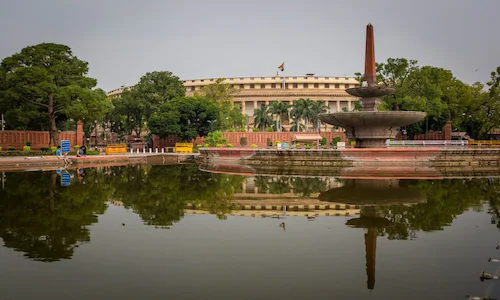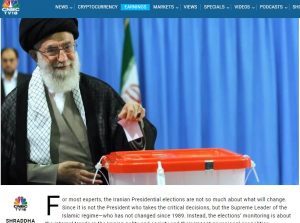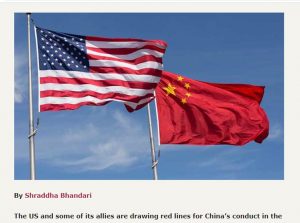Two contradictory narratives dominate the Indian media landscape today, painting a picture of seemingly separate worlds. One set has been about increased FDI and investments in several key sectors, a proliferation of Indian start-ups, the highest forex reserves, and declining Covid cases leading to an unexpected economic recovery. Another set of the world is the sustained protests (for example — farmers’ and minorities’ protests), rising unemployment, deepening of religious faultlines, and rising inflation. Which side India ends up titling or attaining a balance will decide the economic and social growth prospects and depend mainly on India’s politics. For companies operating in India, taking full advantage of India’s growth potential will require effective management of emergent political and social risks.
From investors to companies wanting to enter India to start-ups – concerns are not so much about economic fundamentals – market size, skill set, or demographic dividend. Instead, risks centre around disruptions caused by India’s political structure – electioneering, vote bank politics, uncertain government decision-making, and abrupt policy changes. Political risks have emerged as the main framework of many other threats to companies in the country. We highlight four major reasons for understanding this:
1) The dichotomy of PM Modi’s popularity:
PM Modi leads the strongest ever government in terms of numerical majority in India’s parliament (legislative body) since the 1990s. His party’s vote share (Bharatiya Janta Party) was 38 percent in the last general elections, which has not been the norm in India, known for its coalition politics. He remains the most popular, skillful, master politician to stay in power for some time to come. However, at times his persona, background, and governance beliefs have clashed with the neutrality of the social fabric, much required for India’s growth story. The National Democratic Alliance II (a coalition that PM Modi leads) has gone ahead with its attempts at bold economic reforms (often without building a consensus) and ‘political Hindutva’ agenda, strengthened by its majorities at the centre and governments in several states. However, this has led to issues such as the protests around the Citizen Amendment Bill (end of 2019) and farm law bills (ongoing since 2020). In addition, attempts to reorganise India’s federal structure has created stress points.
2) A rightward shift in Indian politics:
Since the late 1980s, Indian politics has gradually shifted towards the right, manifesting in the mainstreaming of what has been termed as the Hindu ‘religious right’ with differing views on the Indian democracy, secularism, and the ‘minority question’. There have been concrete reasons for this shift – starting from the disillusionment with India’s grand old political party – the Indian National Congress, which has been synonymous with the nature of the Indian state. It has been sustained by the rise of caste-based movements, the Kashmir question, and external issues, including ‘Islamic terrorism’ mainly perpetrated by the Pakistan-based groups in India. The result has been an increasing trend towards nationalism and polarization on crucial issues of governance. There have also been reports targeting minorities in some key states like Uttar Pradesh, though they are sporadic and localized.
3) Absence of a credible opposition:
The only other mass-based, national party, the INC, has been reduced to just 50 seats in the Parliament. At the regional level, a plethora of regional parties can act as challengers to the BJP; however, their clout at an all-India level is limited. The result has been a centralizing tendency at the union government level, with opposition-ruled states taking the brunt in ‘discriminatory’ treatment. This has resulted in regional-level protests/political violence/showdown on significant policies, especially in states where the BJP has been historically weak. These include Kerala and West Bengal but also Maharashtra, where the Centre and state policies have collided in the last two years.
4) Breakdown in consensus building that was the hallmark of Indian democracy:
While PM Modi and his brand of the BJP has been able to capture popular electoral imagination like no one else in years, the government’s track record of building consensus on crucial policies has not been encouraging. In the last two years, especially since the BJP came back to power with a thumping majority, they have taken advantage of a weak opposition in the Parliament to ‘steamroll’ legislations, with significant consequences. There have been questions on the independence of the judiciary and the media as independent pillars.In our assessment, companies/businesses in the country will have to closely watch the following triggers to anticipate any signs of developing disruptions – protests and civil unrest:
1) Electoral violence/tensions in critical states: India’s most populous and diverse state Uttar Pradesh (UP) goes to elections next year.
2) Any laws with economic or social consequences passed in the Parliament without substantial debates – e.g., the ongoing agitation against the Centre’s farm reform laws. Parts of Punjab, Haryana, the National Capital region, and western UP have been the epicenter of closure of arterial roads, disruption of rail traffic, and sites of sustained protests since 2020.
3) Any significant economic policy reform that impacts existing vested interests/sectors leading to retrenchment, job losses, or income loss. Retail, primarily e-commerce, has been such a front where a section of traders and e-sellers have taken on foreign e-commerce companies.
4) Protests on regional issues
India’s growth story has a lot to offer to those who can understand the trend, triggers, stakeholders and make effective risk management plans. The companies need to prepare for labour unionism, disruptions, localized violence, internet shutdowns, and better crisis management at a tactical level. However, comprehensive strategic risk management will also need to be carried out as economic reforms can get more complex and society more polarized. Also, brands like Twitter, Facebook, Nike, Amazon have learned a hard lesson in their key Asian markets. As nationalism becomes the lens through which even economic decisions are viewed – better PR, more nuanced communication strategies, cultural awareness, and engagement with all stakeholders become imperative.
—Shraddha Bhandari is co-founder and CEO of Intelligentsia Risk Advisors, a strategy consulting firm. Views expressed are personal





